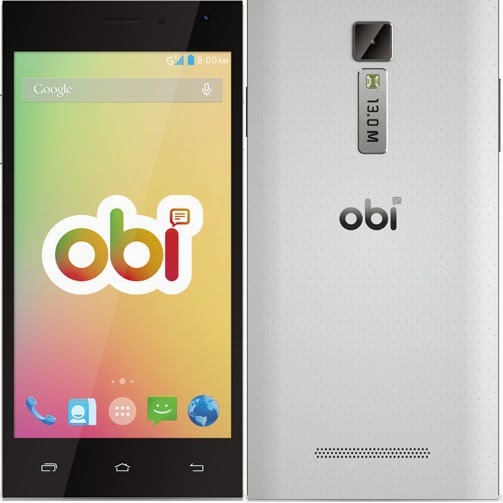The recent arrival of a new smartphone company, Obi Mobiles, in east Africa has created a buzz in the tech-market of the region, as Obi gradually spreads its foot prints in the region starting Kenya and Tanzania. However, there are already many established players in the region, which means Obi’s devices will have to live up to the challenge posed by many competing devices of companies such as Samsung, HTC, Huawei and Tecno. In this review, we have picked Samsung’s Galaxy Grand Prime and Obi Mobiles’ Hornbill S551 for a spec-to-spec review with the intention to help the smartphone consumers in the Tanzanian market make a smart purchase.
Let us start with the basic physical dimensions, where Obi’s Hornbill’s dimensions are 156x76.8x7.9mm and that of Samsung’s Galaxy Prime are 144.8x72.1x8.6mm, which clearly makes Obi’s Hornbill larger but sleeker looking device. Interestingly, in spite of the larger length and breadth, Obi’s Hornbill weighs only 145g where as Samsung’s Galaxy weighs at 156g. However, the critical indicator is the display screen size that is 5.5inches in Hornbill and 5inches in Galaxy Prime, besides offering a better resolution that is 720x1280 pixels for Hornbill and 550x960 pixels for the Galaxy Prime. Considering Obi Mobiles’ focus on youth, the sleeker look and larger screen size have an outright advantage from the perspective of video viewing experience. Moreover, the sleeker look also adds to the youth statement of Obi’s Hornbill.
Some of the similarities in the two devices include 1GB RAM, 8GB internal space and expandable storage up to 32GB through micro SD cards. Also, both the smartphones have 5 megapixel front or secondary cameras. However, the rear or primary in Obi’s Hornbill has 13 megapixels, where as in Galaxy Prime it is only 5 megapixel, which is another advantage for youth who may be interested in taking lots of photos. Furthermore, Hornbill has an advanced Quad Core 1.3GHz Processor (from MediaTek) where as Galaxy Prime has a Quad Core 1.2 GHz Cortex-A53 Processor (from Qualcomm Snapdragon), which again provides Obi an edge. Moreover, Hornbill also seems to stand out in terms of OS where it runs on Android 4.4.2 KitKat where as Galaxy Prime runs on a slightly older Android 4.4 KitKat. Therefore, at the performance level, Obi' Hornbill has a clear edge.
In terms of Connectivity, Hornbill and Galaxy Prime have 2 SIM cards slots, Wi-Fi capabilities (802.11 b/g/n), support GPS and have Bluetooth v4.0, but Hornbill allows users to use both Regular SIM cards and Micro SIM cards where the Galaxy Prime is capable of supporting only Micro SIM cards. But Galaxy Prime has Wi-Fi Direct that enables its consumers to use their device as a Wi-Fi Hotspot, something that Hornbill currently does not provide. Another similarity is that both devices support 3G, but Galaxy Prime also runs on 2G GSM: 850/900, DCS: 1800 and PCS: 1900. One front where Galaxy Prime takes an edge is the battery capacity with 2600 mAh, which will obviously last longer than Hornbill that holds 2200 mAh.
The most pleasant surprise, however, for the people in Tanzania is the price tag, where Hornbill is priced at around TSh 2,50,000 where as Samsung’s Galaxy Grand Prime is at around TSh 3,90,000. Galaxy Prime’s higher price could be justified on account of longer battery life, Wi-Fi direct and the option to run on 2G network, however, Obi’ Hornbill seems to have edged out its competitor on almost every other front and seems to be worth the money spent.











Brilliant post thanks for sharing.
ReplyDeleteThanks Maqsood. Glad that you found this post interesting.
ReplyDelete